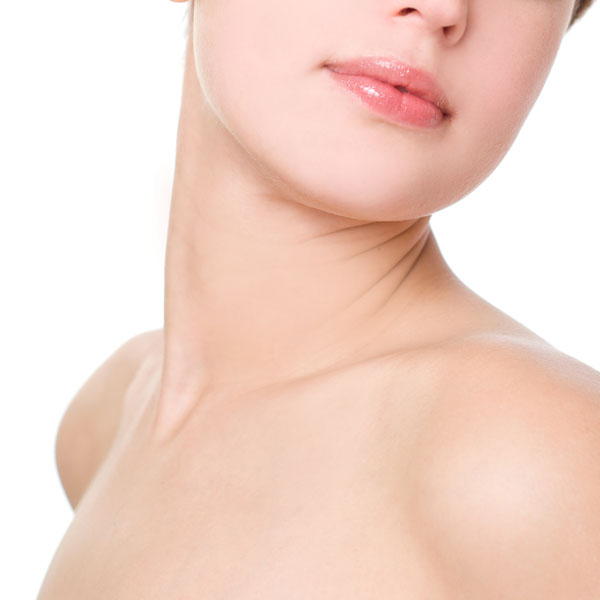By Doctor Thierry Boisaubert
The correction of ptosis in the oval of the face, which leads to the appearance of jowls, is a common request in aesthetic medicine. But the approach should be comprehensive, otherwise the results risk looking unnatural. 
Nowadays, the oval should be treated along with the rest of the face to avoid any disharmony. If we use injectables or resorbable threads, which provide a lifting effect in the lower face, we must avoid over-correcting by employing a “bolus” technique. Personally, I use a combined technique which associates inductors, hyaluronic acid and resorbable threads.
An example treatment plan
Several sessions are required, and they should be spaced 4 to 6 weeks apart in order to see how the superficial layers are affected by the evolutions in the deep dermal layers. We need to recreate the right amount of volume in the right place for a maximum lifting and inducing effect. I place fillers and, if necessary, resorbable threads in the very first session. First, we need to deal with the framework of the face by lifting the oval.
The injection of Ellansé or hydroxyapatite into the deep dermal layers enables us to pull the tissues upwards, without adding too much volume. We inject small quantities of product on either side of the jowls, up to the mandibular angle, and we massage the gel after injection so as to increase the malar volumes.
In the second session, I set about harmonising the face, this time by injecting hyaluronic acid much more superficially. Experience has shown that by combining HA and fillers, we can achieve high collagen and elastin production, resulting in increased tonus of the tissues. You can use Ellansé, which is a highly inducing filler with a good volumising effect. Hydroxyapatite is also suitable for many indications that require us to recreate volume. This filler can be used to treat the tear trough, which can become hollow over time. By injecting the lower third of the face, we immediately alter the chin area. We could even inject along the lower edge of the jaw to counter any sagging in this area.
Finally, any maintenance sessions focus on touch ups, which should be superficial and use subtly-volumising fillers. We often need to touch up the expression lines, from the mouth to the chin, and we might need to inject fillers directly into the chin for a plumped, fleshy appearance.
What about the décolletage?
The neck and décolletage should be treated after the oval. With age, horizontal wrinkles appear on the neck, generally coupled with sagging skin and vertical wrinkles which are etched on the décolletage. Smoking and sun exposure are also responsible, along with the insufficient hydration of these fragile areas. Again, a low-density cross-linked filler is recommended, given that the desired result is to improve skin dryness.
Other techniques
The décolletage area, which is often exposed to sunlight, sometimes displays brown marks or redness. To treat this, we might use a procedure based on focused ultrasound, such as Ultherapy or lasers. A peel might also be beneficial.
Expert in aesthetic medicine since 2000. Tenured professor for the inter-university degree in Morphological and Anti-Aging Medicine at the Aesthetic Faculty (Paris) since 2007; lecturer and tutor; director of the Esthélence centre for aesthetic medicine in Neuilly.















